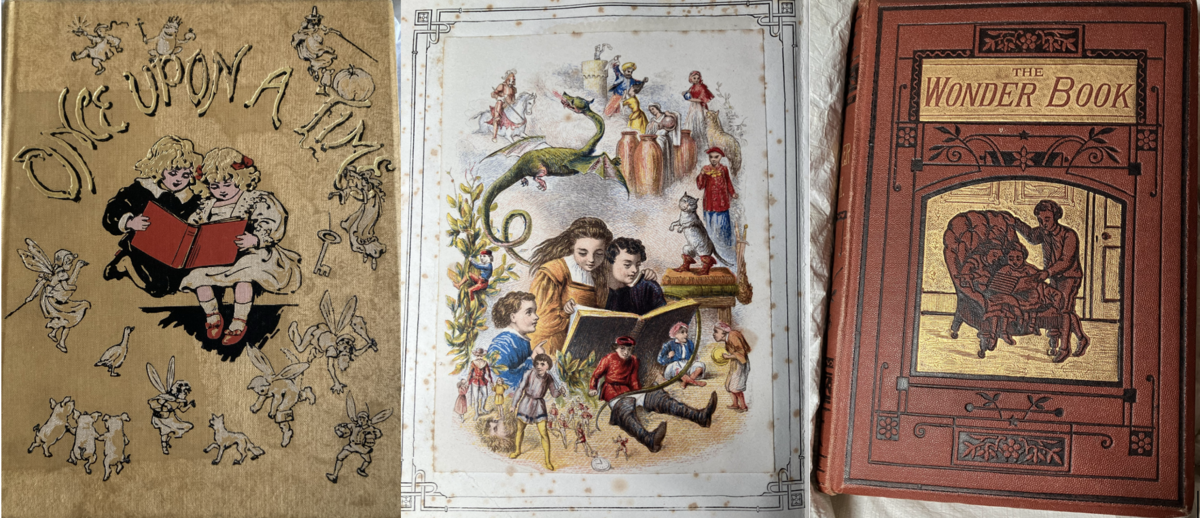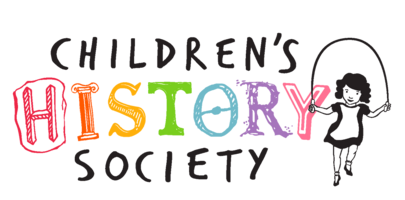Amy Wells is a DPhil candidate at the University of Oxford, undertaking a Collaborative Doctoral Award with the National Trust supported by the AHRC. Her research seeks to uncover the stories within and around children's books in English country house collections of the long-nineteenth century, finding intersections between the life of a book and the life of its owner.
One of the defining features of childhood studies is a recurring and honest acknowledgement of the difficulty in trying to define its disciplinary bounds; the fluidity, transience and individualised experience of childhood itself is reflected in its scholarship. So, too, does one find an ambiguity in the disciplinary boundaries of bibliographical studies. Book history, reader reception, material studies of the book and textual criticism appear across English Literature departments, History departments, specialised History of the Book courses as well as Library schools and archival degrees, each with a valued and insightful perspective to offer but confirming that this field of research is a vast and open one, continually asking questions about how to define its margins. As a researcher of children’s book history I am confronted with the challenge of bridging these two shifting concepts as I seek to explore histories of children’s reading behaviours and engagements with books, alongside and atop the histories of the books themselves.
In her 2022 monograph Portable Magic: A History of Books and their Readers, Emma Smith sheds light on a term that seems surprisingly unknown given its apparent wide-reaching potential for use – ‘bookhood’– a term born in the nineteenth-century but, as Smith notes, ‘one due for revival’.[i] Through further explanation it becomes clear that bookhood is, or at least is understood to be by Smith, ‘the state or condition of being a book’,[ii] a meeting of form and content which facilitates the appreciation of a book’s life in different hands, experiencing interactions and being experienced by a user. ‘User’ as opposed to ‘reader’ is a conscious linguistic choice here; in relation to childhood, despite its title Matthew Grenby refers throughout The Child Reader (2011) to ‘book use’ as opposed to a study only of ‘reading’, which can limit acknowledgement of other forms of interactions with books that may be more authentic experiences of behaviours, especially the early encounters with books of child subjects.[iii]
'Like childhood, bookhood conjures up an image of a timeline, one in which relationships and engagements with others can alter its shape or formation'

Left to right: Once upon a time: the favourite nursery tales (Ernest Nister, 1890); The child’s own book; containing forty-eight favourite stories (William Tegg, 1870); Nathaniel Hawthorne, A wonder-book for girls and boys (George Routledge & Sons, 1875)
Recognised by Smith as a ‘coinage on the model of more familiar forms such as ‘childhood’ or ‘brotherhood’,[iv] a relationship is already destined to be drawn between bookhood and childhood, a relationship which greatly aids my navigation of a merged childhood/bibliographic body of research and reveals new perspectives on each concept in turn. Like childhood, bookhood conjures up an image of a timeline, one in which relationships and engagements with others can alter its shape or formation. Moreover, this mutability over time points to how while Smith speaks in Portable Magic of familiarity with the term ‘childhood’, this is a subjective familiarity born of the understanding of childhood within a particular time. As Seth Lerer writes, it is a ‘shifting category that has meaning in relationship to other stages of personal development and family life’, requiring historicization on small and large scales .[v] Retaining a continual sense of infancy, then, childhood can be seen to share a common feature with bookhood of perpetual newness – or at the least changeability – resulting in an openness to continued investigation and questioning of its interactions with other histories.
This fluidity of both concepts, shaped as they are by relations to other life developments and movements, also offers the possibility for reappearance and recurrence throughout different ages and stages of a life. Through an awareness and active consideration of bookhood, adults are able to reconnect with elements of a childlike state, challenging the idea that the ‘conceptual space of childhood’ is one which can feel closed to older people.[vi] Bookhood encompasses physical manifestations of experiences as well as memories, and it is this blend of material and emotional interactions with books that can serve as a reminder and tool for living with the pleasures of childhood rather than distanced from them. A library room, or even a single bookshelf, provides a tangible (and spatial) exhibition of bookhood in action; a collection of books illustrates the bookish interests of their owner over time, capturing the past and the present through its accumulated nature. The bookhood of these shelves can be explored on a large scale in the organisation of them, their appearances next to one another, but can also be examined under the microscope of content analysis of individual books, of the published text and marginalia created by a reader. In any level of considering bookhood there is an opportunity to engage playfully, with curiosity and wonder, qualities often associated with childhood. A non-exhaustive list of examples, these can be experienced in eccentric arrangements of books, in open-mindedness in the selection of reading material, or through wordplay in notation around the text itself.
'Bookhood encompasses physical manifestations of experiences as well as memories, and it is this blend of material and emotional interactions with books that can serve as a reminder and tool for living with the pleasures of childhood rather than distanced from them'
Smith recognises that children’s books play an active role in the construction of ‘the very category of child that they seem in fact to reflect’,[vii] underlining the value of studying children’s literature with an aim to grasp the development of childhood as a familiar term. This statement by Smith is followed by the addendum that ‘[s]omething similar happens to all of us when we choose a book,’ expanding the idea of a book’s influence on shaping personal development to all stages of the life journey of a reader, and contributing to the notion of a book having ‘life-ishness’ itself through its dynamic relations with personhood. It is in this ‘life-ishness’ of the book that I find bookhood to be a most helpful addition to my researcher’s toolbelt. Through consideration of life, of both a book and its owner, user, or reader, I am able to holistically investigate fluctuations and fluidity with acceptance rather than resistance, welcoming the complexity of historical studies as a fruitful conclusion in and of itself.
[i] Emma Smith, Portable Magic: A History of Books and their Readers (London: Allen Lane, 2022), p. 11; ‘bookhood’ is found in the Pictorial Times periodical on 24 June 1843, implying the literariness or literary reputation of a place or object, and in Joseph Ashby-Sterry’s The Shuttlecock Papers: A Book for an Idle Hour (London: Tinsley Brothers, 1873), p. v, referring to the ‘toga virilis of book-hood’ which is assumed when writing has been published as a book.
[ii] Smith, p. 12.
[iii] Matthew O. Grenby, The Child Reader, 1700-1840 (Cambridge: Cambridge University Press, 2011), p. 194.
[iv] Smith, p. 11.
[v] Seth Lerer, Children’s Literature: A Reader’s History from Aesop to Harry Potter (Chicago: The University of Chicago Press, 2008), p. 2.
[vi] Space and place in children’s literature, 1789 to the present, ed. By Maria S. Cecire, Hannah Field, Kavita M. Finn and Malini Roy (Farnham: Ashgate, 2015), p. 1.
[vii] Smith, p. 295.



